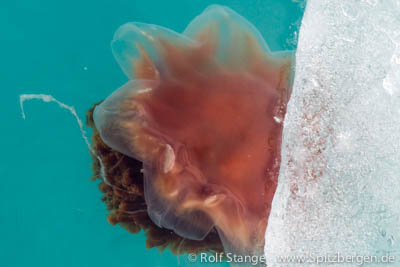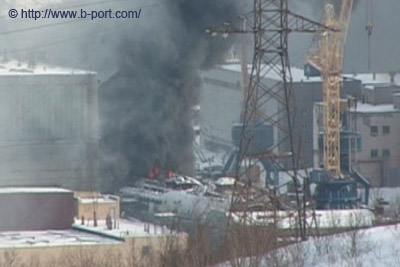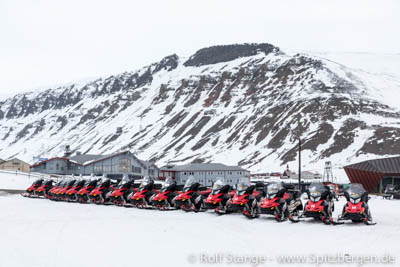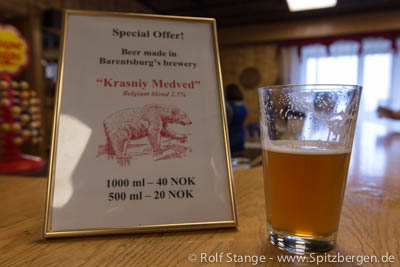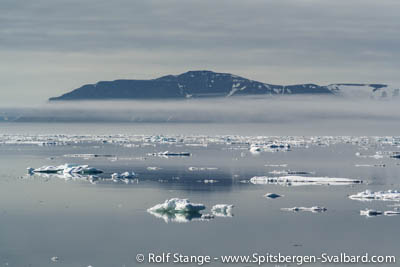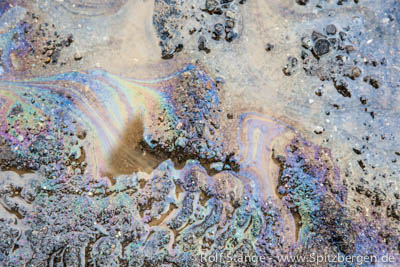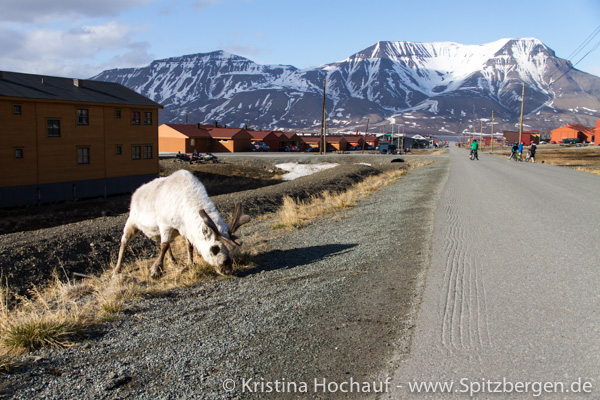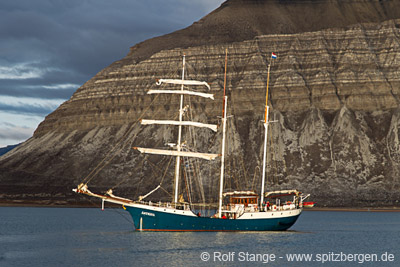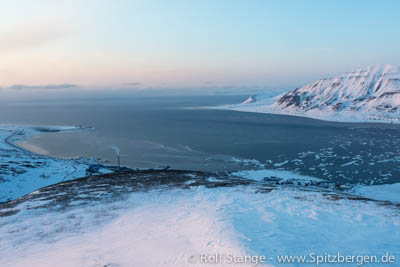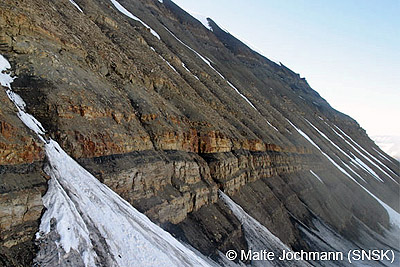-
current
recommendations- Liefdefjord
New page dedicated to one of Spitsbergen's most beautiful fjords. Background information and many photos.
- New Spitsbergen guidebook
The new edition of my Spitsbergen guidebook is out and available now!
- Liefdefjord
New page dedicated to one of Spitsbergen's most beautiful fjords. Background information and many photos.
Page Structure
-
Spitsbergen-News
- Select Month
- April 2025
- March 2025
- February 2025
- January 2025
- December 2024
- November 2024
- October 2024
- September 2024
- August 2024
- July 2024
- June 2024
- May 2024
- April 2024
- March 2024
- February 2024
- January 2024
- December 2023
- November 2023
- October 2023
- September 2023
- August 2023
- July 2023
- June 2023
- May 2023
- April 2023
- March 2023
- February 2023
- January 2023
- December 2022
- November 2022
- October 2022
- September 2022
- August 2022
- July 2022
- June 2022
- May 2022
- April 2022
- March 2022
- February 2022
- January 2022
- December 2021
- November 2021
- October 2021
- September 2021
- August 2021
- July 2021
- June 2021
- May 2021
- April 2021
- March 2021
- February 2021
- January 2021
- December 2020
- November 2020
- October 2020
- September 2020
- August 2020
- July 2020
- June 2020
- May 2020
- April 2020
- March 2020
- February 2020
- January 2020
- December 2019
- November 2019
- October 2019
- September 2019
- August 2019
- July 2019
- June 2019
- May 2019
- April 2019
- March 2019
- February 2019
- January 2019
- December 2018
- November 2018
- October 2018
- September 2018
- August 2018
- July 2018
- June 2018
- May 2018
- April 2018
- March 2018
- February 2018
- January 2018
- December 2017
- November 2017
- October 2017
- September 2017
- August 2017
- July 2017
- June 2017
- May 2017
- April 2017
- March 2017
- February 2017
- January 2017
- December 2016
- November 2016
- October 2016
- September 2016
- August 2016
- July 2016
- June 2016
- May 2016
- April 2016
- March 2016
- February 2016
- January 2016
- December 2015
- November 2015
- October 2015
- September 2015
- August 2015
- July 2015
- June 2015
- May 2015
- April 2015
- March 2015
- February 2015
- January 2015
- December 2014
- November 2014
- October 2014
- September 2014
- August 2014
- July 2014
- June 2014
- May 2014
- April 2014
- March 2014
- February 2014
- January 2014
- December 2013
- November 2013
- October 2013
- September 2013
- August 2013
- July 2013
- June 2013
- May 2013
- April 2013
- March 2013
- February 2013
- January 2013
- December 2012
- November 2012
- October 2012
- September 2012
- August 2012
- July 2012
- June 2012
- May 2012
- April 2012
- March 2012
- February 2012
- January 2012
- December 2011
- November 2011
- October 2011
- September 2011
- August 2011
- May 2011
- April 2011
- March 2011
- February 2011
- January 2011
- December 2010
- November 2010
- September 2010
- August 2010
- July 2010
- June 2010
- May 2010
- April 2010
- March 2010
- February 2010
- November 2009
- October 2009
- August 2009
- July 2009
- June 2009
- May 2009
- April 2009
- March 2009
- February 2009
- January 2009
- December 2008
- November 2008
- October 2008
- August 2008
- July 2008
- June 2008
- May 2008
- April 2008
- March 2008
- February 2008
- April 2000
- Select Month
-
weather information
-
Newsletter

| Guidebook: Spitsbergen-Svalbard |
Home → March, 2014
Monthly Archives: March 2014 − News & Stories
Marine biology in the polar night: the dark side of life in the polar seas
As so many other activities in the Arctic, most research activities are very seasonal and largely concentrated in the summer, when working conditions are – well, not easy, but easier than in the polar winter, which brings cold, bad weather and darkness 24 hours a day.
So far it was largely believed that it would somehow be similar with animal life, largely. Of course, polar bears don’t hibernate and reindeer have to look for food 12 months a year, and most animals who can move long distance make sure they spend the winter somewhere more pleasant. But whoever stays, reduces his activity, from movement to metabolism, to a minimum. At least according to common assumptions, largely based on a lack of better knowledge.
Some „light“ has now been shed into this darkness during a research expedition of the Norwegian vessel Helmer Hanssen (formerly known as the Jan Mayen), just a few weeks ago in Kongsfjord. The idea was to make observations and collect data to verify or correct those old assumptions.
In times of a normal day-night-cycle, plankton will move towards the surface to feed during darkness and back into lower, darker water layers at daytime to keep away from predators. This regular movement between food-rich surface waters and the darkness of the deep is the biggest natural movement of biomass on Earth. One of the research questions is if a similar movement is still taking place in times of 24 hour darkness. Even if it will take time for data to be analysed and results to be published, it is already now clear that there is much more activity in the water, including movement, than believed so far.
Predatory fish species are appearently able to find food to a higher degree than assumed. This is one result of analysis of stomach content of fish caught during the expedition with Helmer Hanssen. Fish had prey in their stomach which requires at least a minimum of visual perception to be caught. This indicates that these fish have some kind of night vision, at least to some degree. Eyes of such fish will now be analysed to find out how this might work.
Quite heavy equipment was used for oceanographic work including the movement of organisms in the water column. As a first result, the assumption that arctic fjords are a sleepy place in the polar night can safely be put aside. It is already clear that marine biologists who don’t mind cold and darkness will have a lot of work to do in the years to come.
Similar investigations in the Antarctic have already shown that there is much more activity during the polar night in the south polar sea, too.
Another important research field is the question of the reaction of marine organisms to environmental changes, ranging from low concentrations of oil in the water to climate change which will reduce the ice cover in space, thickness and time and bring higher water temperatures. These questions will involve a lot of laboratory work on fish and plankton caught alive during months and years to come.
The work on Helmer Hanssen in Kongsfjord was coordinated by Norwegian scientists, but involved international researchers. Marine biologists and specialists from all over the world are looking forward to the results.
Quite mysterious already at daylight: arctic plankton..
Source: Svalbardposten
Russian nuclear submarine Krasnodar near Murmansk on fire
The russian nuclear submarine Krasnodar is on fire since Monday morning near Murmansk. Krasnodar is a Oscar II class boat, similar to the Kursk, and one of the last Russian submarines from the days of the Cold War to be taken out of service in 2012 for scrapping.
According to the website Barentsobserver, scrapping a nuclear submarine starts with removal of spent nuclear fuel. Next is removing the rubber cover of the outer hull. This seems to be a dangerous process, as fires of the outer rubber layer during removal have occurred before more than once. It seems as if the present fire is a similar case.
The removal of the nuclear reactors is the last step of scrapping a nuclear submarine. In other words, the 2 reactors are still on board, with considerable amounts of radioactive materials.
Krasnodar is in the Russian navy shipyard Nerpa north of Murmansk, only about 100 km from the Norwegian border. Despite an information exchange agreement, Norwegian authorities were informed by media about the fire before they got any information from official Russian sources. The Norwegian district governor describes a fire on a nuclear submarine as a serious issue.
According to Russian information, no radioactivity has escaped so far.
The burning nuclear submarine Krasnodar in the navy shipyard Nerpa near Murmansk. Foto: b-port.com.
Source: Barentsobserver
Snow mobile season in Spitsbergen: accidents/important to know
The snow mobile season has started a few weeks ago in Spitsbergen. Some locals start already during the polar night, while most others and most tourists start their snow mobile excursions when the light comes back around mid February. The season lasts as long as snow and ice make it possible to be out, usually into the first days of May or until mid-May if it works well.
Snow mobile excursions make it possible to see amazing places which are otherwise hard to reach, if not impossible for most, but they bear their specific risks. If you don’t know the local terrain and you do not have experience with snow mobiles, then it is definitely a good idea to join a guided group. This is also the official recommendation by the Sysselmannen (governor).
Some incidents of the last couple of weeks:
- In early March, tourists had to be evacuated with helicopters in two cases after having suffered fractures while falling with their snow mobiles or, rather, turning them over in uneven terrain. Both incidents happened near Sassendalen, one in the moraine of Rabotbreen and one in Brattlidalen. Both persons were members of guided groups.
- On Tuesday (March 18), a man had to be airlifted with chest injuries after he had driven his snow mobile over a steep slope, falling down 6 metres. Other members of his group called the rescue forces with mobile phones, but could not provide a position as they did not exactly know where they were. The group was not guided and did not have GPS or local knowledge. The incident happened on the coast between Colesbukta and Barentsburg, a frequently used route, but with several steep slopes which are hard to see and seriously dangerous at inadequate speed.
In another case, a person went unconscious and fell from his snow mobile at low speed in Grønfjord, south of Grøndalen. First aid was given, but his life could not be saved. The information available seems to indicate a heart attack or similar medical emergency.
The first two cases indicate that accidents can naturally also happen while on tour with guided groups. But at least locally knowledgeable guides will make sure adequate speed is being used, which is especially important in case of terrain obstacles such as steep slopes which can be very difficult to see. Adequate speed is of vital importance. Guided groups also have emergency equipment including satellite phones. The mobile phone cover in Spitsbergen is unreliable or, rather, inexistent over wide areas.
For safe tours with snow mobile and ski, the following are recommended or should be considered:
- Avalanche equipment (snow shovel, avalanche probe), unless you stay in clearly avalanche-safe terrain.
- Local knowledge or good advice from people with local experience. GPS with digital map, spare batteries (!), and printed map and compass as a backup.
- Emergency equipment. Prepare for a prolonged stay in the field in case of sudden bad weather or snow mobile breakdown. Communication equipment independent of mobile phone grid such as satellite phone and PLB. Tent, sleeping bag, isolation mattress, camping stove and fuel, extra warm clothes. Be ready to stay out for at least 24 hours in bad weather.
- Rifle and other polar bear safety equipment.
- Stay with an experienced person or join a guided group if you don’t have experience with snow mobiles.
- Make sure you know how to deal with minor, common repairs such as exchanging the v-belt.
- Snow mobiles like to break down, especially when it is most unwelcome. Consider this for any trip further away than you can walk back.
- If you don’t really know the terrain: expect terrain obstacles that are difficult to see.
- Observe regulations: you need helmet and driving license, zero alcohol and, for large parts of Spitsbergen, insurance cover and notification to the administration in advance. There are scooter-free areas. If you don’t know the regulations and boundaries, you have to join someone who does, such as a guided group.
This list is not complete, but it includes some important points.
Rental snow mobiles in Longyearbyen ready to go.
Source: Sysselmannen, Svalbardposten, my own experience.
Will Longyearbyen get the northernmost brewery in the world?
On Svalbard, sale and production of alcoholic drinks are currently regulated more strictly than in mainland Norway. Apart from bars and restaurants, alcoholic drinks are only sold by the governmental monopolist “Nordpolet” in Svalbardbutikken in Longyearbyen and there the allowance is limited for everyone. Locals have a card and tourists use their flight ticket to document purchases. Production of alcoholic drinks is completely prohibited, both for commercial purposes and for private consumption.
These regulations are now under reconsideration and it seems they might soon be history. It is four years ago that Robert Johansen contacted the Norwegian Health Department to apply for the concession for a brewery in Longyearbyen. This was not possible under given legislation, but for once, authorities were welling (after all, it was about beer!) so this turned out to start the process for a legislative amendment.
Currently the Norwegian authorities decide on the suspension of the regulations, which date partly back as far as 1929. The Departments of Health and Agriculture did already signal that a change of regulations is welcome and that no reasons are seen against it. If the legislative amendment comes, the production of alcoholic drinks will be made possible as a start. Later the quantitative limitation for the sale of alcohol may be abolished.
If everything proceeds as expected, Robert Johansen wants to offer beer “made in Longyearbyen” as soon as summer 2014. His brewery will be called Svalbard Bryggeri AS and will start with a production of ca. 100.000 liters per year. Sale of related souvenirs is also planned. There are reactions on the expected amendment in Barentsburg as well. There the Russian mining company Trust Arktikugol already applied for the concession for a brewery – which already exists since 2013 as part of the mining company.
When the brewing in Longyearbyen really starts, Svalbard Bryggeri will be the northernmost brewery in the world. Currently Mack Brewery in Tromsø claims this title and it might keep it officially as with an annual production of 100.000 liters Svalbard Bryggeri would be a microbrewery according to Norwegian law. This term describes small breweries with an annual production lower than 600.000 liters. Several mcrobreweries are currently planned in Norway, north of Tromsø, for example in Hammerfest and in the municipality of Gamvik.
The Mack Brewery faces the arising competition positively but as a big brewery it classifies itself in another category. Some years ago for financial reasons the Mack Brewery moved its beer production to Nordkjosbotn wich is located south of Tromsø. Mack nevertheless claims the title “the world´s northernmost brewery” because the company´s headquarter is still in Tromsø.
Beer made in Barentsburg.
Source: Svalbardposten
Arctic drift ice: February cover at fourth lowest extent since 1979
The arctic drift ice cover usually reaches its maximum distribution in mid March. In 2014, however, the February extent was far behind the normal values. The average was 14.4 million square kilometres or 910,000 million square kilometres less than the long-term average. This puts February 2014 on the fourth place in the negativenstatistics since 1979, the beginning of systematic observations.
February 2005 holds so far the absolute negative rekord.
In February 2014, the ice cover grew with about 14,900 square kilometres per day. The corresponding long-term value is, however, 20,300 square kilometres. Short-term fluctuations against the growing trend in February are due to ice movement rather than melting.
In February 2014, the temperatures in large parts of the Arctic were 4 to 8 degrees above the long-term average.
Arctic drift ice: the extent in February was extremely low.
Source: Snow and Ice Data Centre
Oil spills in cold climate areas: are and remain uncontrollable
It is almost 25 years ago that the oil tanker Exxon Valdez hit a reef on the south coast of Alaska. The Exxon Valdez achieved sad fame when an alcoholic captain and an overcharged third mate steered the ship on rocks on March 24, 1989. 37,000 tons of crude oil were spilled and polluted 2,000 km of coastline. The result was and is an ecological and economical disaster for a whole region.
Scientists have now had 25 years to study the consequences of an oil spill in cold (but not high arctic) coastal waters. The results are sobering:
- A cleanup of a major spill of crude or heavy oil is impossible. Despite using resources of about 2 billion US-$, Exxon has managed to clean up a mere 7 % of the polluted coastline. After the Deepwater Horizon catastrophe in the Gulf of Mexico, BP has used an astronomic 20 billion US-$ but “cleaned” no more than 3 % of coastline and surface waters, largely by using other toxic chemicals. Conclusion: it is impossible to clean up a spill of heavy or crude oil once it has happened.
- Once damage is a fact, it will last a long time, if not forever. In Alaska, 32 habitats and population have been monitored after the Exxon Valdez disaster. Out of these, only 13 are considered fully “recovered” or “very likely recovered.” Thousands of tons of oil are still in the sediment, polluting their surroundings for a very long time.
- Ecological damage cannot be repaired by man, only by nature itself. To make this possible, ecosystems have to be intact.
- The risks of oil spills, both the likelihood of such an event and the following impact, is usually underestimated or downplayed by authorities and industries.
- Prevention is the only strategy that really makes sense. Currently, the industry tends to a reduce spill risk to “As Low As Reasonably Practicable” (ALARP); instead of “As Low As Possible” (ALAP), regardless of cost” although “prevention is clearly cost-effective”.
- In cold areas, the ecological impact and technical difficulties increase strongly. Any attempt of clean-up in ice waters are highly unrealistic to be successful.
These are some of the key results presented by Professor Steiner in an article in the Huffington Post. On the long term, only abstinence of oil will prevent oil spills. This was one of the demands of the 1989 disaster in Alaska, but the global need for oil has obviously increased dramatically since. Sustainability is not yet a significant factor in decision making in politics and economy.
Small oil spill next to a leaking diesel tank at a station in Antarctica.
Source: Huffington Post
Reindeer killed in traffic accident in Longyearbyen
Traffic in Longyearbyen is usually quite safe, but Monday evening saw a tragic accident when a car hit a reindeer on way 500. The animal’s back was broken, and the police did accordingly not have a choice but to kill the reindeer on the spot.
There are almost always some reindeer somewhere in Longyearbyen, and they are usually not afraid of people or moving vehicles and they don’t watch out for cars before crossing roads. Drivers therefore have to take great care, especially at times of darkness.
Way 500 is the “main street” between the centre and the river. Most streets in Longyearbyen do not have names but numbers.
Reindeer next to the road in Longyearbyen.
Source: Sysselmannen
Polar voyages 2014, 2015: Spitsbergen, Jan Mayen, East Greenland
Most of my polar voyages in 2014 have already been fully booked for quite some time. If you still want to join in 2014, then you have got the possibility to do so in September, focussing on natural history, photography and hiking with SV Antigua. Click here for more info (German site, as the trip is German speaking).
Now I have also got most of the dates for 2015 fixed. Detailed information is yet to come, but as most voyages will, according to experience, be fully booked at an early stage, I do recommend to get in touch in case you are interested.
The following trips in Spitsbergen are planned for 2015 (they will be German speaking, so you should speak a bit if you want to join, but of course it does not have to be your first language):
- Around Spitsbergen with SV Antigua, June 30- July 17, 2015.
- Advanced Spitsbergen: Expedition with SY Arctica II, July 19- August 06, 2015.
- West and North Spitsbergen with Antigua, focussing on glaciers: September 15-25, 2015. Have a look at the photos of a similar voyage in 2012.!
Jan Mayen: our expeditions to Jan Mayen are fully booked more quickly than we can advertise them properly, which is quite amazing! This is the case both for 2014 and 2015, so if you are interested to spend a week on Jan Mayen, then we are now looking at 2016 and you should get in touch sooner rather than later.
We are also planning another trip into Scoresbysund (east Greenland) with SV Ópal, similar to 2013, so have a look at the photos (trip 1 and trip 2) to get an impression. The planning for another trip to East Greenland in 2015 is currently still in an earlier phase.
Sailing expeditions in the arctic: Spitsbergen, Jan Mayen, East Greenland 2015.
February temperatures in Longyearbyen 15 degrees above average
In February, the average temperature was no less than 15 degrees above the long-term average. For weeks, the temperatures have oscillated around freezing. Only the first 10 days, the air was at -10°C or below. Since then, temperate Atlantic airmasses have moved north to push colder, arctic airmasses further away.
Meteorologists have calculated the average temperature of February in Longyearbyen to be -1.2°C. The long-term average for February is -16.2°C.
It can be assumed that it is not only the air that is currently warmer than it used to be, but also the waters around Spitsbergen. The ice situation seems to confirm this, as large parts of the waters east and north of Spitsbergen are far more open than they usually are at this time of the year. Even inner branches of the fjords such as Tempelfjord and Billefjord have not yet really frozen over so far.
The current weather forecast for the next 10 days does at least not show any temperatures above freezing. While it was not far below zero in Longyearbyen over the weekend, temperatures at the east coast were said to be near -30°C.
Also in Norway, the winter has, so far, been far milder than it usually is.
Even the small Adventfjord has not really been frozen in several years by now.
Source: NRK
New coal mine at Lunckefjellet officially opened
The mining company Store Norske (SNSK) has opened the new coal mine at Lunckefjellet, between Sveagruva and Reindalen, officially on Tuesday (February 25). Next to miners and company officials, the local adminstration from Longyearbyen and Norwegian media were present at Lunckefjellet. Miner Terje Nyland has cut the symbolic cord to mark the opening. He was determined to do so by lot, rather than an official taking the job, a nice gesture by the mining company.
It is 14 years ago a new coal mine was opened on Svalbard for the last time.
The first ton of coal left Lunckefjellet already on October 25 as part of the preparations for mining, which are now almost finished. Soon, everything is supposed to be ready for a daily production of 10,000 tons coal.
SNSK is currently experiencing economically challenging years. Prices on the world market are under pressure, and the risk connected to exchange rate fluctuations is high. A 1 % loss of the dollar rate may cost the company up to more than 1,2 million Euro. The last time Store Norske has finished a year with a positive result is several years ago. A negative result is expected also for 2014, although the pressure is expected to lessen due to first benefits of the new mine. On the other side, costs for the opening of the Lunckefjellet mine as well as increased costs at Svea Nord, where production is getting into marginal stages, are increasing the pressure.
Store Norske has published the following figures for 2013:
• Production: 1,855,000 tons of coal (2012: 1,229,000)
• Income: 1,32 billion Norwegian Kroner (2012: ca. 160 million)
• Sales: 2,135.000 tons of coal (2012: 701,000 tons)
The economical situation of the new mine at Lunckefjellet, planned to be productive for 6-7 years only, is described as marginal by company leaders already given current market conditions. Store Norske invests in research which is supposed to increase sales prices or generate additional income from, for example, technical upgrading of coal. On the long term, the company has hopes for further new mines near Sveagruva (at the mountain Ispallen) and Longyearbyen (Operafjellet).
New future mines are politically uncertain. People in Longyearbyen are, however, aware that coal mining is still by far the most important single economical factor to support local jobs and accordingly the population of Longyearbyen.
Coal-bearing layers at Lunckefjellet. Foto: Malte Jochmann, SNSK.
Sources: SNSK Bedriftsnytt, Svalbardposten (09/2014)
News-Listing live generated at 2025/April/30 at 19:22:10 Uhr (GMT+1)
